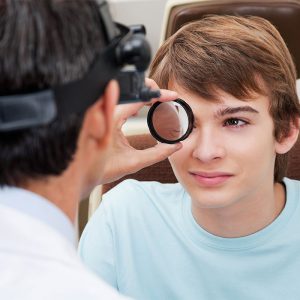Our eyes are more than windows to the world, they are also windows into our body. In fact, an eye exam is the first place a disease can be seen lurking in the body. It may even surprise you just how many conditions can be detected during a comprehensive eye exam, according to the American Academy of Ophthalmology.
Aneurysm
 This is when a the wall of a blood vessel has a bubble in it, causing it to become weak. Eventually, it can start to leak or even rupturing. They require immediate medical attention. Symptoms include, loss of body or facial function, or one sided headache.
This is when a the wall of a blood vessel has a bubble in it, causing it to become weak. Eventually, it can start to leak or even rupturing. They require immediate medical attention. Symptoms include, loss of body or facial function, or one sided headache.
Brain Tumor
The pressure a brain tumor can cause is transmitted to the eye. Signs include changes in the pupil size, recent bout of double vision, loss of side vision, or changes in the optic nerve from swelling.
Skin, Blood, and Tissue Cancer
A comprehensive eye exam can reveal a number of types of cancer. The outer surfaces of the eye and eyelids are affected by skin cancer. Tumors throughout the body can spread to structures that make up the eye. Lymphoma and leukemia can also affect the eye’s interior.
Diabetes
Signs of diabetes often appear in the tissue in the eye before diagnosis. Diabetic Retinopathy shows up in the retina in small blood vessels that leak blood or yellow fluid. Early detection goes a long way in voiding complications and vision loss.
High Blood Pressure
High blood pressure affects one in three adults in America. If the blood vessels in the back of the eye contain blood, kinks, or unusual bends, it is an indication of high blood pressure. Which is a risk factor for glaucoma, macular degeneration, and diabetic retinopathy.
Check back with us next week for some more conditions that can be detected during a comprehensive eye exam. Until then, contact Lake Nona Eye Care to make your appointment.
